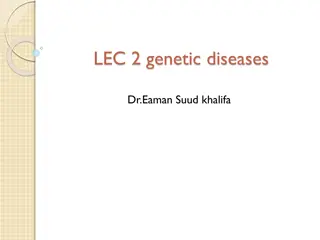
Understanding Microtechnique in Histology
Learn about the importance of fixation in maintaining cell integrity, the role of fixatives in denaturing proteins, benefits of microwave irradiation in tissue fixation, and classification of fixatives based on their action on proteins. Explore different types of fixative solutions and their mechanisms of action in microtechnique. Discover how proper fixation techniques ensure accurate histological analysis.
Download Presentation

Please find below an Image/Link to download the presentation.
The content on the website is provided AS IS for your information and personal use only. It may not be sold, licensed, or shared on other websites without obtaining consent from the author. If you encounter any issues during the download, it is possible that the publisher has removed the file from their server.
You are allowed to download the files provided on this website for personal or commercial use, subject to the condition that they are used lawfully. All files are the property of their respective owners.
The content on the website is provided AS IS for your information and personal use only. It may not be sold, licensed, or shared on other websites without obtaining consent from the author.
E N D
Presentation Transcript
Microtechnique Fixation Staining Embedding Sectioning Dehydration
Fixation It is important to maintain cells in as life-like a state as possible to prevent post-mortem changes as a result of putrefaction (destruction of tissue by bacteria or fungi) and autolysis (destruction of tissue by its own enzymes). to prevent the tissue from undergoing osmotic shock, distortion, and shrinkage
The fixative acts to denature proteins by (i) coagulation (of secondary and tertiary protein structures to form insoluble gels). (ii) forming additive compounds (cross-linking end-groups of amino acids). (iii) a combination of coagulative and additive processes (iv) protein side groups to which dyes may attach. fixatives (promote the attachment of dyes to particular cell components by opening up (v) differentiation remove bound water to increase tissue refractive index to improve optical Prolonged fixation may result in the chemical masking of specific protein targets and prevention of antibody binding during immunohistochemistry protocols.
Microwave irradiation Microwave fixation has been found to be useful in increasing the molecular kinetics giving rise to accelerated chemical reactions (i.e., faster fixation time, accelerated cross-linking of proteins). microwave-assisted tissue fixation with phosphate- buffered saline of normal saline offers the removal of the use of noxious and potentially toxic formalin fixation and a decrease in the turnaround time. In addition, staining of the microwave-fixed tissues was found to be sharper and brighter in most of the tissues than those obtained after conventional fixation
Classification of fixatives (i) action on proteins (ii) types of fixative solution (iii) use
Action on proteins They can be coagulant or non-coagulant fixatives. Coagulant fixatives affect proteins in such a way that a coagulum (clot) forms (e.g., white of an egg when cooked). In contrast, non-coagulant fixatives result in a smoother gel formation.
Types of fixative solution There are two main types of fixatives Compound fixatives consist of two or more fixatives in solution primary consist of a single fixative in solution Zenker s, Helly s, and Bouin s fixatives absolute ethanol or 10% formalin
Their use and mechanism of action microanatomical fixatives used for light microscopy cell organelles are destroyed, typically neutral buffered formalin or NBF, Zenker s, Bouin s, and 10% formal saline Cytological fixatives electron microscopy non-coagulant preserve cellular structures or inclusions nuclear (e.g., Carnoy s) cytoplasmic (e.g., Helly s and 10% formal saline).
Types of fixatives Aldehydes include formaldehyde (formalin, when in its liquid form), paraformaldehyde. Formaldehyde is a good choice for immunohistochemical surgical pathology and autopsy tissues requiring hematoxylin and eosin (H and E) staining 10% neutral buffered formalin or NBF) is standard The buffer prevents acidity in the tissues. Formaldehyde offers low levels of shrinkage and good preservation of cellular detail
Glutaraldehyde causes deformation of the alpha-helix structure in proteins so it should not be used for immunohistochemistry staining. it fixes very quickly, it an excellent choice for electron microscopic studies it provides poor penetration gives very good overall cytoplasmic and nuclear detail and is prepared as a buffered solution (e.g., 2% buffered glutaraldehyde). This fixative works best when it is cold and buffered and not more than 3 months old .



![Lec [2] Health promotion](/thumb/274962/lec-2-health-promotion-powerpoint-ppt-presentation.jpg)
